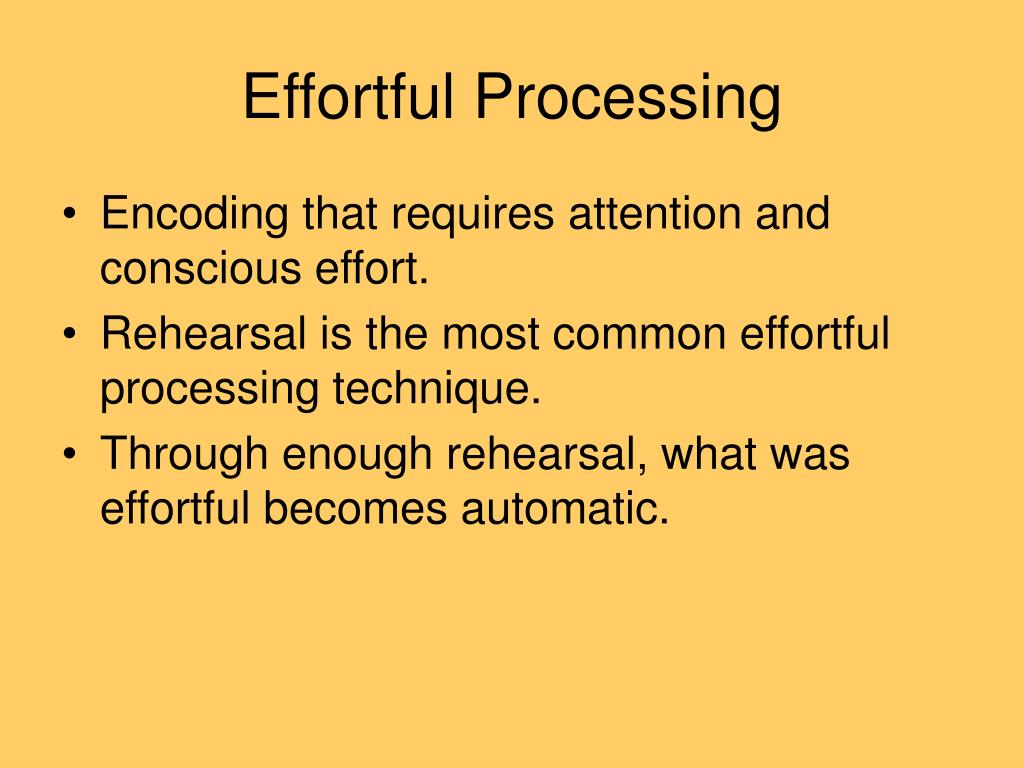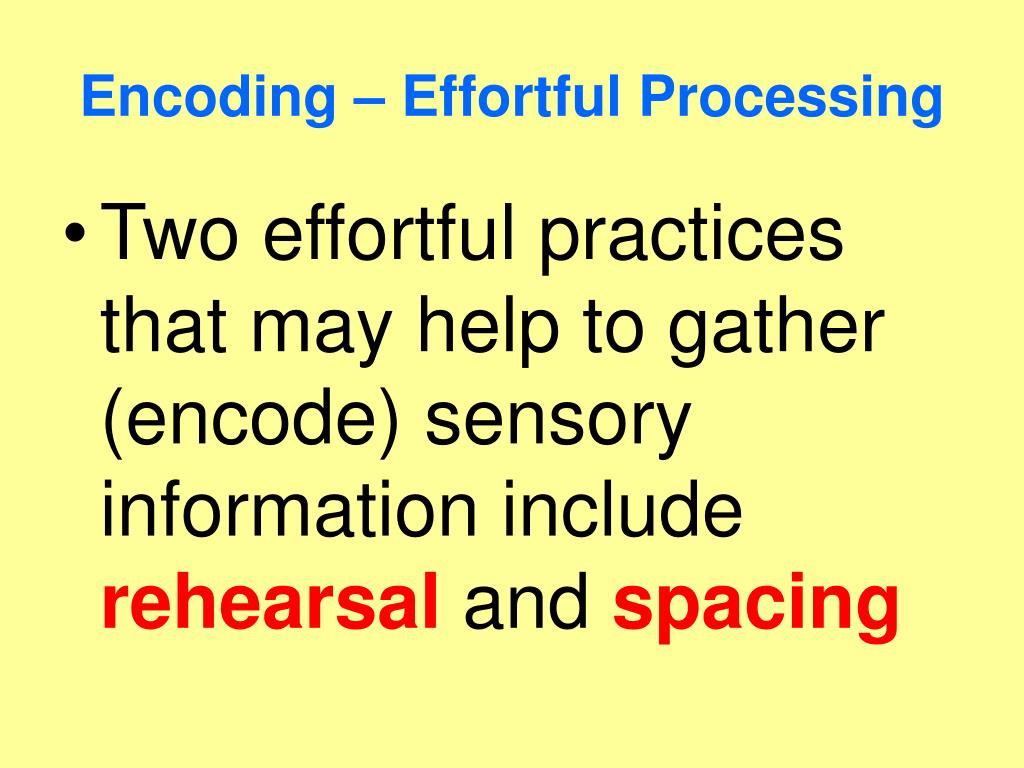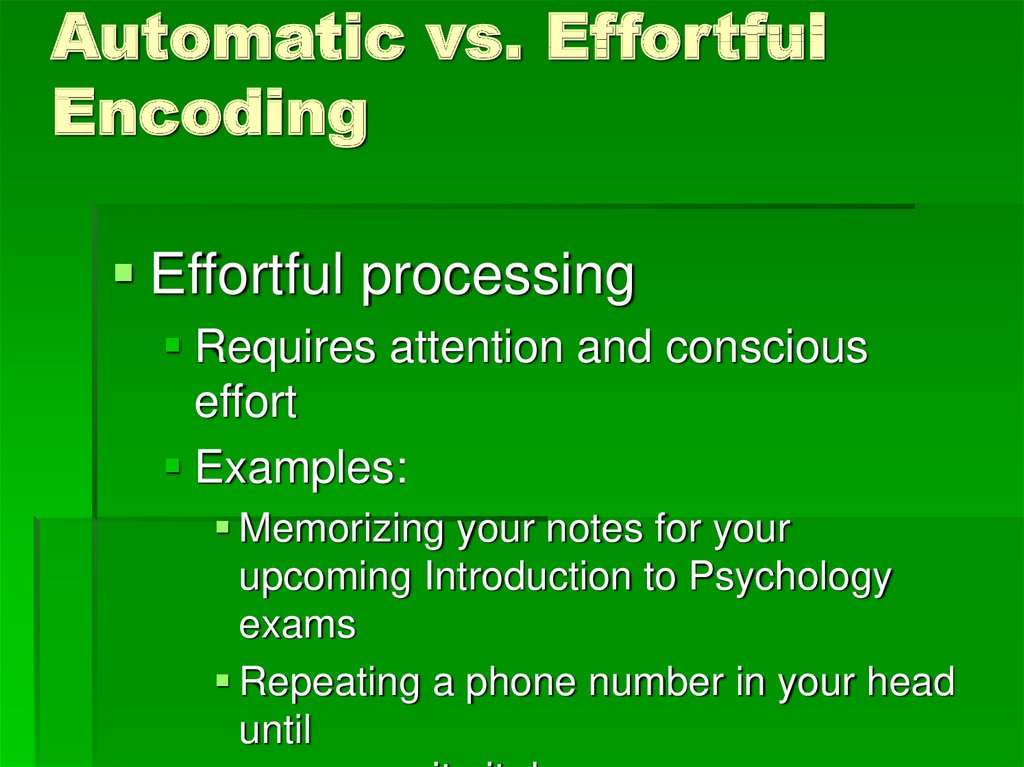

Visual encoding is the encoding of images, and acoustic encoding is the encoding of sounds, words in particular. When they were asked to remember the words, they tended to recall them in categories, showing that they paid attention to the meanings of the words as they learned them. The 60 words were actually divided into 4 categories of meaning, although the participants did not know this because the words were randomly presented. It was first demonstrated by William Bousfield (1935) in an experiment in which he asked people to memorize words. The encoding of words and their meaning is known as semantic encoding. Material is far better encoded when you make it meaningful. You can see that the sentences are now much more memorable because each of the sentences was placed in context. Next count backwards from 40 by fours, then check yourself to see how well you recalled the sentences this time. Now, try writing them again, using the following prompts: bagpipe, ship christening (shattering a bottle over the bow of the ship is a symbol of good luck), and parachutist. How well did you do? By themselves, the statements that you wrote down were most likely confusing and difficult for you to recall.
#Effortful processing how to#
Once you know how to drive, you can encode additional information about this skill automatically. When you first learn new skills such as driving a car, you have to put forth effort and attention to encode information about how to start a car, how to brake, how to handle a turn, and so on. This is known as effortful processing (Figure 2).

But what about the actual test material you studied? It probably required a lot of work and attention on your part in order to encode that information. Recalling the last time you studied for a test is another example of automatic processing. Automatic processing is usually done without any conscious awareness. This is known as automatic processing, or the encoding of details like time, space, frequency, and the meaning of words. If someone asks you what you ate for lunch today, more than likely you could recall this information quite easily. Encoding information occurs through automatic processing and effortful processing. We organize the information with other similar information and connect new concepts to existing concepts.
#Effortful processing code#
Once we receive sensory information from the environment, our brains label or code it. We get information into our brains through a process called encoding, which is the input of information into the memory system. Retrieval, or getting the information out of memory and back into awareness, is the third function. Storage is the retention of the encoded information.


Encoding involves the input of information into the memory system. Memory is the set of processes used to encode, store, and retrieve information over different periods of time. Memory is an information processing system therefore, we often compare it to a computer.


 0 kommentar(er)
0 kommentar(er)
